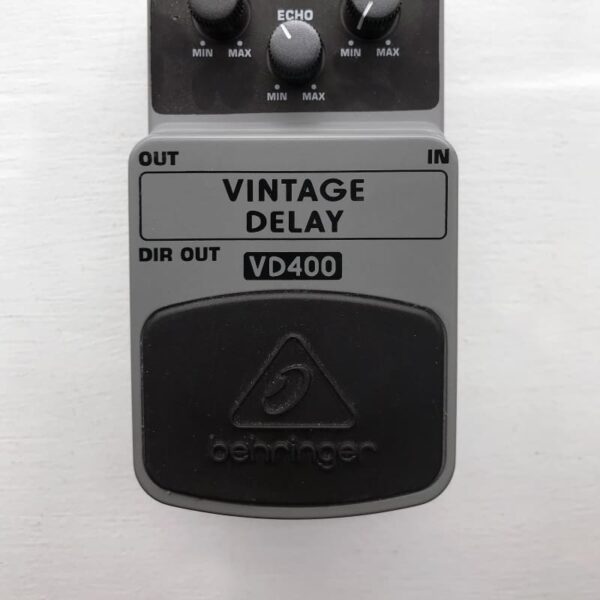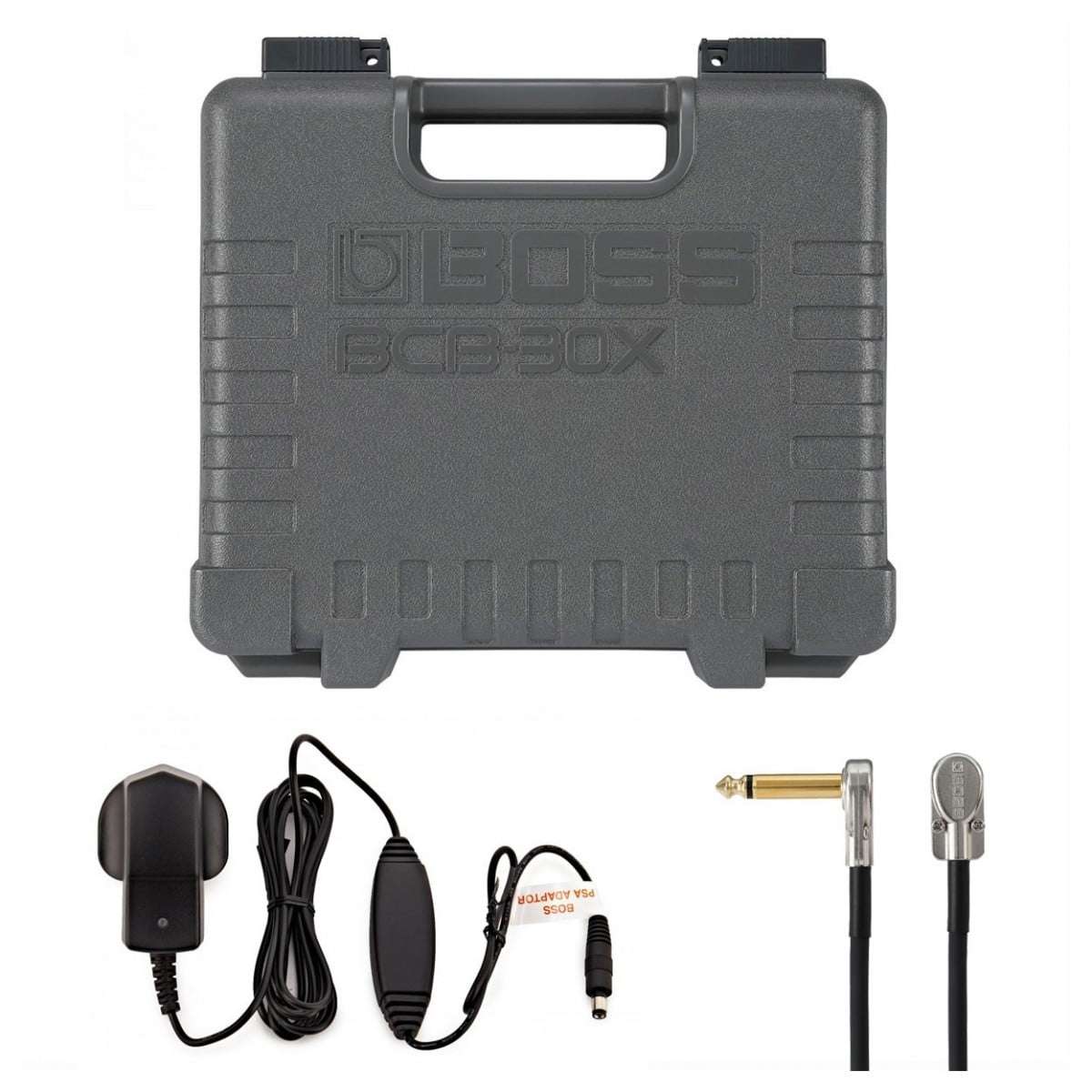did somebody say just Tweak?
Power Supply

A power supply for guitar pedals is a device that provides consistent and reliable electrical power to multiple effects pedals simultaneously. It eliminates the need for individual batteries or multiple AC adapters, simplifying pedalboard setup and reducing cable clutter. Here are some key features and considerations when choosing a power supply for guitar pedals:
1. **Multiple Outputs**: A power supply should have multiple outputs to accommodate the various power requirements of different pedals on your pedalboard. Outputs may include standard 9V DC outputs, as well as higher voltage outputs for pedals that require them.
2. **Voltage and Current Ratings**: Each output should provide the correct voltage and current rating to match the requirements of the pedals connected to it. Most pedals operate on 9V DC, but some may require different voltages or higher current ratings. Make sure the power supply can deliver enough power for all your pedals.
3. **Isolation**: Isolated outputs provide separate electrical paths for each pedal, eliminating ground loops and minimizing noise and interference. This helps maintain the integrity of your guitar signal and ensures clean, noise-free operation, especially when using high-gain or sensitive pedals.
4. **Daisy Chain Compatibility**: Some power supplies offer a combination of isolated outputs and daisy chain outputs. Daisy chain outputs allow you to connect multiple pedals to a single output using a daisy chain cable, which can be convenient for low-power pedals or when all pedals share the same power requirements.
5. **Compact Size and Mounting Options**: Consider the size and form factor of the power supply to ensure it fits comfortably on your pedalboard. Some power supplies are designed to be mounted underneath the pedalboard for a clean and tidy setup, while others may sit on top or alongside the pedals.
6. **Overload Protection**: Look for power supplies with built-in overload protection to prevent damage to your pedals in case of power surges or short circuits. This can help prolong the lifespan of your pedals and provide peace of mind during performances.
7. **Compatibility with International Power Standards**: If you plan to use your pedalboard internationally, make sure the power supply is compatible with different AC voltages and plug standards. Some power supplies offer switchable voltage settings or come with adapters for use in different regions.
Overall, a reliable power supply is essential for powering your guitar pedals and ensuring consistent performance without noise or interference. Choose a power supply that meets the specific needs of your pedalboard setup, provides adequate power for your pedals, and offers features like isolation and overload protection for optimal performance and reliability.
- Boss
- Danelectro
- Digitech
- Dunlop
- Electro Harmonix
- Fishman
- IK Multimedia
- Korg
- Markbass
- MXR
- Orange Amps
- Roland
- TC Electronic
- TC Helicon
- Warwick
- Acoustic Guitar
- Analog
- Analogue
- Bass
- Boost
- Buffer
- Chorus
- Compression
- Compressor
- Controller
- Delay
- Distortion
- Echo
- Ed Sheeran
- Envelope
- EQ
- Expression
- Flanger
- Fuzz
- Guitar Effect Pedal
- Looper
- Modulation
- Multi Effects
- Multi-Effects
- New
- Noise Gate
- Octave
- Overdrive
- PedalBoard
- Phaser
- Pitch
- Power
- Power Supply
- Preamp
- Processor
- Reverb
- Slicer
- Stereo
- Sustain
- Switch
- Synth
- Synthesizer
- Tremolo
- Tuner
- Tuner Pedal
- Used
- Vibrato
- Volume
- Wah
Showing 1–30 of 52 results
-
1980s Boss Ws-20 wireless system 1980s – used Boss Power Supply Guitar Effect Pedal
Read More£155.42 -
1982 – 1983 Boss PSM-5 Power Supply & Master Switch (Black… – used Boss Power Supply Guitar Effect Pedal
Read More£73.02 -
1991 – 1999 Boss PSM-5 Power Supply & Master Switch (Red L… – used Boss Power Supply Guitar Effect Pedal
Read More£36.44 -
2000s Behringer CC300 Chorus Space-C Black – used Behringer Power Supply Guitar Effect Pedal
Read More£78.23 -
2010s Behringer VD400 Vintage Analog Delay Pedal Gray – used Behringer Power Supply Delay Analogue Guitar Effect Pedal
Read More£41.73 -
2010s Markbass Compressore Compressor Black – used Markbass Power Supply Compressor Bass Guitar Effect Pedal
Read More£156.17 -
2010s TC Electronic RPT-1 Nova Repeater Black – used TC Electronic Power Supply Guitar Effect Pedal
Read More£109.32 -
2015 – Present Boss ES-8 Effects Switching System Black – used Boss Power Supply Guitar Effect Pedal
Read More£572.62 -
2020 Boss Unknown – used Boss Power Supply Guitar Effect Pedal
Read More£331.71 -
Behringer ADI21 V-Tone Acoustic Preamp – New Behringer Preamp Power Supply EQ Acoustic Guitar Guitar Effect Pedal
Read More£31.75 -
Behringer BEQ700 Bass Graphic EQ Pedal – New Behringer Power Supply EQ Boost Bass Guitar Effect Pedal
Read More£24.30 -
Behringer FX600 Digital Multi-FX Pedal – New Behringer Power Supply Flanger Phaser Pitch Delay Chorus Guitar Effect Pedal
Read More£36.00 -
Boss BCB-30X Pedalboard – New Boss Power Supply Guitar Effect Pedal
Read More£46.40 -
Boss BCB-30X Pedalboard with Power Supply and Patch Cables – New Boss Power Supply Guitar Effect Pedal
Read More£89.99 -
Boss LS-2 Line Selector Guitar Pedal – New Boss Power Supply EQ Guitar Effect Pedal
Read More£100.75 -
Boss Multi-FX Carry Bag – New Boss Power Supply Guitar Effect Pedal
Read More£42.00 -
Danelectro Molten Metal pedal board with power supply and patc… – used Danelectro Power Supply Guitar Effect Pedal
Read More£46.85 -
Digitech PS0913DC-02 Power Supply UK – New Digitech Power Supply Guitar Effect Pedal
Read More£24.99 -
Digitech SDRUM Strummable Drums Pedal – Secondhand – New Digitech Power Supply Guitar Effect Pedal
Read More£259.00 -
DigiTech TRIO+ Band Creator Pedal – Secondhand – New Digitech Power Supply Guitar Effect Pedal
Read More£249.00 -
DigiTech TRIO+ Band Creator Pedal – Secondhand – New Digitech Power Supply Guitar Effect Pedal
Read More£249.00 -
Dunlop ECB-003 AC Adapter 9V UK – New Dunlop Power Supply Guitar Effect Pedal
Read More£16.99 -
Electro Harmonix 12AC-1000 Power Supply UK – New Electro Harmonix Power Supply Guitar Effect Pedal
Read More£14.99 -
Electro Harmonix Holy Grail Neo Reverb – New Electro Harmonix Reverb Power Supply Guitar Effect Pedal
Read More£115.08 -
Electro Harmonix KEY9 Electric Piano Machine – Secondhand – New Electro Harmonix Power Supply Guitar Effect Pedal
Read More£155.00 -
Electro Harmonix MOP-D10 Multi-Output Power Supply – New Electro Harmonix Power Supply EQ Overdrive Analogue Guitar Effect Pedal
Read More£249.00 -
Electro Harmonix Nano Deluxe Memory Man Analogue Delay – New Electro Harmonix Vibrato Modulation Power Supply Echo Distortion Delay Chorus Analogue Guitar Effect Pedal
Read More£180.56 -
Electro Harmonix Voice Box Vocal Harmony Machine/Vocoder – Secondhand – New Electro Harmonix Power Supply Guitar Effect Pedal
Read More£189.00 -
Fishman AFX Pro EQ Mini Acoustic Preamp & EQ – New Fishman Preamp Power Supply EQ Bass Acoustic Guitar Guitar Effect Pedal
Read More£119.00 -
IK Multimedia ToneX Pedal – Secondhand – New IK Multimedia Power Supply Guitar Effect Pedal
Read More£299.00





























